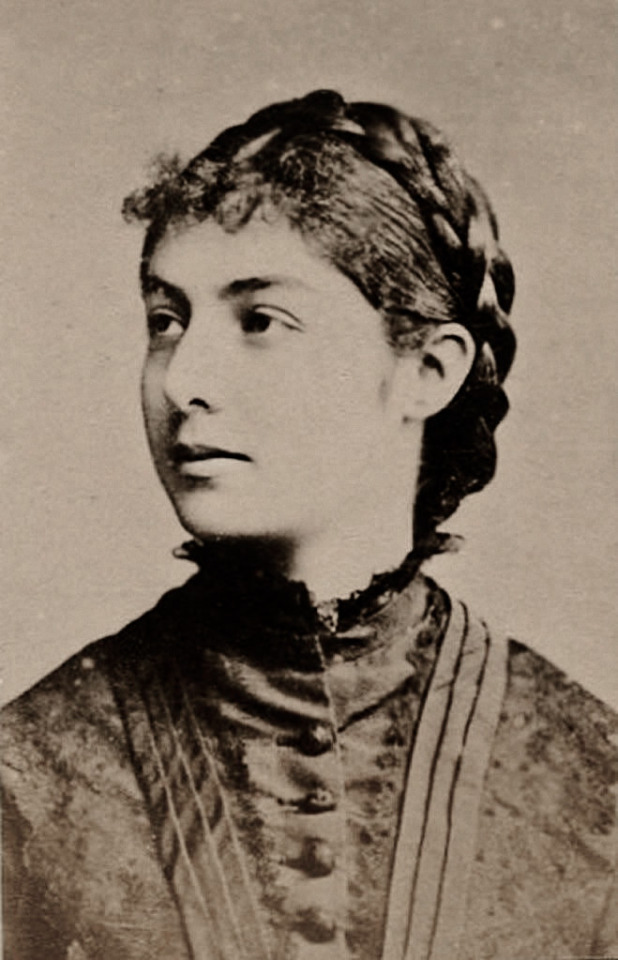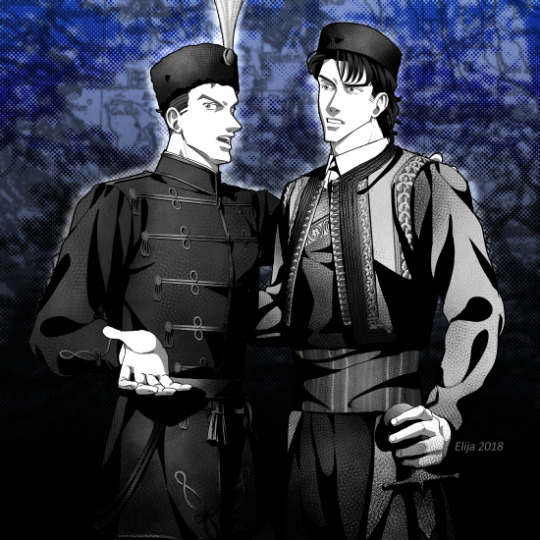#natalija obrenović
Explore tagged Tumblr posts
Text



Natalija Obrenović, née Cheșcu/Keshko, Queen Consort of Serbia (1882–1889).
#natalie of serbia#natalia of serbia#natalija obrenović#serbia#royalty#royal family#royals#victorian#victorian era#history#historic#19th century
17 notes
·
View notes
Photo

“Natalija Queen of Serbia and Elisabeth Empress of Austria were two of the most beautiful royal women ever.” - Submitted by Anonymous
25 notes
·
View notes
Photo

Natalija Obrenovic, Queen of Serbia.
#Natalija Obrenovic#serbia#Natalie of Serbia#house of Obrenović#serbian monarchy#long live the queue
36 notes
·
View notes
Photo


I did another colourization of my favourite Queen, Kraljica Natalija Obrenović od Srbije. I've done many colourizations of her over the years. Here is the Wikipedia article on her if you want to know more about her: https://en.wikipedia.org/wiki/Natalie_of_Serbia
#serbia#serbian#serb#srbija#kraljica#royalty#obrenovic dynasty#balkan#natalija#obrenovic#natalie of serbia#natalija obrenovic#history#monarchy#colorized#colorization
95 notes
·
View notes
Photo

Draginja "Draga" Obrenović (11 September 1867 – 11 June 1903), formerly Mašin), was the Queen consort of Serbia as the wife of King Aleksandar Obrenović. She was formerly a lady-in-waiting to Aleksandar's mother, Queen Natalija (until 1897).
2 notes
·
View notes
Photo

1882 Vlaho Bukovac - Natalija Obrenović, Queen of Serbia
(National Museum of Serbia)
190 notes
·
View notes
Photo



The red one was based on ask above from a prompt that I’ve rebloged last month while 46 is one bandaging another. It's immediately reminded me of The Wounded Montenegrin, a painting by Paja Jovanović, you can see I've put lots of reference from that art piece into my drawing.
The blue one is just a thing that I've planing to draw for a long time, which Goran in his traditional garment and Lazar is wearing a full dress uniform. Yes I’m escaping from drawing actual backgrounds here.
Also I'm been thinking to make a post about these two since last year so anon you're really lucky! And I will only count late 19th century to early 20th century this time, since it's also showed as those pictures.
During the centuries of nationalism, both Montenegro and Serbia were having strong willingness to achieve the unification of Serbdom. However the actual progress was more complicated and even tortuous, even both of Montenegro and Serbia were in the same side during war times, but we can still see there were disputes between their monarchs then politics in general, in fact this is related to the method of the unification itself.
The agreement between Serbia and Montenegro was signed on 5 October 1866 in Cetinje. According to the agreement, Serbia and Montenegro would act as an unified Serb country. The major role in establishing of the First Balkan Alliance was played by Serbia, Prince Mihailo Obrenović made Serbia the center for revolutionary and national activity in the Balkans. Prince Nikola was willing to relinquish his throne should a union of the two states be possible. Since Mihailo was childless, the Montenegrin ruler evidently had hopes that, if the Serbian throne became vacant, he might succeed. But this earliest Balkan alliance didn't last long since Mihailo was assassinated in 1868 and his successor Milan was only 13 years old.
Uprising in Herzegovina had triggered wider crisis of the Ottoman rulership in the Balkans. Montenegro declared war on the Ottoman Empire in 1876 then Serbia followed closely (eventually Russia declared war in 1877). As part of the final outcome of the war, Montenegro and Serbia were formally recognized as independence at the Congress of Berlin in June 1878, and they both acquired more territories but their gains were much smaller compared to the previous Treaty of San Stefano had promised, so the conference were very disappointing for them.
Attempting to seize on the instability in Serbia, Nikola sought to promote himself as the legitimate heir to the Serbian crown. Conflicts between the Karadjordjević and Obrenović families presented Nikola with an opportunity to meddle in the internal politics of Serbia, and gave him a degree of latitude he may otherwise have had to do without. Nikola's daughter Zorka married the Petar Karadjordjević in 1883, however Miloš Obrenovic was the ruler of Serbia at that time, then this was a move that worsened the relationship between Montenegro and Serbia.
Nikola's son Mirko married Natalija Konstantinović in 1902, since she was a descendant of the Obrenović, meanwhile the Serbian King Aleksandar was childless, so the Montenegrin prince now once became the heir for the Serbian throne. But the Serbian royal couple were both killed in the May Coup that took place in 1903, which led to the end of the Obrenović dynasty, Peter Karađorđević eventually became the new king. Again, both Serbia and Montenegro have a strong willingness to unite, on Serbia's point of view, the unification will under the Karadjordjević dynasty.
Ottoman Empire was almost driven out of Europe after Balkan Wars of 1912 to 1913, then both Serbia and Montenegro were further expanded their territories (especially Serbia), while they also got a common border, a development that once again revitalized the debate over Serbian–Montenegrin unification.
During the Great War, according to the joint operation plan of the Serbian and Montenegrin armies in the war against Austria-Hungary two-thirds of the Montenegrin army was placed under the supreme command of Serbia and delegates were exchanged in order to ensure stable communication between the Serbian and Montenegrin armies.
A violet and underlying controversy between the Rolyalists (the Greens) and Unionists (the Whites) arose, the Podgorica Assembly commenced on 24 November 1918, and the session lasted until 29 November. The most important decisions of the Assembly were made at the session on 24 November to dethroned King Nikola, unite Montenegro with Serbia under the Karadjordjević dynasty then into a Yugoslav state.
Not all Montenegrins approved of the decisions the assembly reached. Those who favored unification with Serbia were satisfied with the outcome, but those who favored continued independence and the continuation of the rule of the Petrović dynasty were not. On Orthodox Christmas Day in January 1919, the Greens staged an armed uprising, then Whites, with support from the Serbian Army, defeated the Greens near Cetinje.
(xxxxxx)
#serbia oc#aph serbia#montenegro oc#aph montenegro#art tag#historical#traditional costume#uniforms#2#serbmont#//s... sort of#tw nudity#tw blood#aph balkans#balkantalia
27 notes
·
View notes
Text
RUŽA I TRNJE - KRALJICA NATALIJA OBRENOVIĆ
RUŽA I TRNJE – KRALJICA NATALIJA OBRENOVIĆ

View On WordPress
0 notes
Text
Natalija Obrenović
Natalija Obrenović has a street in Belgrade named „Kraljice Natalije“ The street is placed in the very centre, and is well known for all the institutions that are located there. Some of them are Matematical gimnasium, Electrotechnical school „Nikola Tesla“, Russian cultural center.
0 notes
Quote
Sanjala sam čaroban san...
Kneginja Natalija Obrenović
5 notes
·
View notes
Photo


This is a colourization and digital restoration I did of Queen Natalie of Serbia (Kraljica Natalija Obrenović od Serbije).
I haven’t made many posts about her on Tumblr so I’ll add a write up here because most of my watchers on dA already know who she is because I used to colourize a lot of pictures of her
Queen Natalie was born Natalia Keschko to Russian Army Colonel Petre Keshko and his wife Princess Pulcheria Sturdza of Moldavia. She and her 3 siblings were orphaned as children. In 1875 Natalie married Prince Milan Obrenović of Serbia whom she had 2 sons with, Princes Alexander and Sergej. Her one son Prince Sergej died a few days after being born.Their marriage was an unhappy marriage that ended in a divorce. Her son Alexander who was the only heir to the throne. When he became King he got engaged to a woman named Draga Mašin who was 1 of formerly Queen Natalie’s ladies-in-waiting and 12 years his senior. The marriage was opposed by many including Natalie. After the marriage Natalie was exiled from Serbia because she was so against the new Queen Draga. The marriage and reign of King Alexander didn’t last long and ended in a military coup where both Draga and Alexander were killed. After which marked the end of the Obrenović dynasty. Natalie converted to Catholicism and became a nun spending the rest of her life in France. She died in 1941.
#serbia#srbija#kraljica#kraljica natalija#queen natalie#russian#romanian#royalty#obrenovic#serbian#history#balkan
22 notes
·
View notes